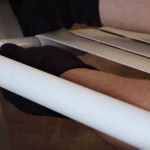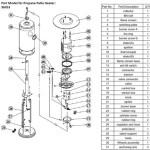Average Cost For A Paver Patio: A Comprehensive Guide
Paver patios offer a durable, aesthetically pleasing, and versatile solution for outdoor living spaces. They enhance property value, provide a designated area for relaxation and entertainment, and can significantly improve the overall curb appeal of a home. However, before embarking on a paver patio project, understanding the associated costs is crucial for effective budgeting and planning. This article provides a comprehensive overview of the factors influencing the average cost of a paver patio, offering insights into material selection, labor expenses, and potential additional costs.
The cost of a paver patio is generally measured in dollars per square foot, but this figure is highly variable and is influenced by several different factors. A small, simple patio constructed with basic concrete pavers might cost significantly less than a large, intricate design using premium natural stone pavers. Therefore, a detailed understanding of the cost components is essential for developing an accurate estimate.
Key Factors Influencing Paver Patio Costs
Several interconnected factors determine the final cost of a paver patio. These factors can be broadly categorized into material costs, labor costs, and project-specific considerations. Understanding the interplay of these elements is critical for accurate budgeting.
Material Costs: The selection of pavers is the most significant determinant of the material cost component. Pavers are available in a wide range of materials, sizes, shapes, colors, and textures, each with its own price point. The most common paver materials include concrete, brick, and natural stone.
Concrete pavers are typically the most affordable option. They are manufactured in a variety of styles and can mimic the look of natural stone at a fraction of the cost. The price of concrete pavers can range from $3 to $10 per square foot, depending on the complexity of the design and the quality of the material.
Brick pavers offer a classic, timeless aesthetic and generally fall in the mid-range price category. Their cost typically ranges from $6 to $12 per square foot. The availability of reclaimed brick can sometimes provide a cost-effective alternative, although the labor required to clean and prepare reclaimed brick can offset some of the savings.
Natural stone pavers, such as flagstone, travertine, and bluestone, are the most expensive option. They offer unparalleled natural beauty and durability, but their cost can range from $8 to $30 or more per square foot, depending on the type of stone, its thickness, and its availability. The inherent variations in natural stone also require careful selection and placement, which can add to the labor costs.
Beyond the pavers themselves, other materials contribute to the overall cost. These include the base materials, such as gravel and sand, which are essential for providing a stable and level foundation. Geotextile fabric is often used to prevent weed growth and stabilize the base. Polymeric sand, used to fill the joints between the pavers, also adds to the material cost. The prices of these materials can vary depending on the quantity required and local market conditions.
Labor Costs: The labor cost associated with installing a paver patio can be substantial, often accounting for a significant portion of the total project cost. Labor rates vary depending on the contractor's experience, location, and the complexity of the project. Generally, labor costs range from $5 to $15 per square foot. More intricate designs or the presence of site-specific challenges can increase labor costs.
The installation process involves several steps, each requiring skilled labor. These steps include site preparation, which involves excavation, grading, and compaction of the soil. The base material must be properly installed and compacted to ensure a stable foundation. The pavers are then laid in the desired pattern, and the joints are filled with polymeric sand. A final compaction and cleanup complete the installation process.
Experienced contractors typically charge higher labor rates due to their expertise and efficiency. However, hiring a qualified contractor can save money in the long run by ensuring a properly installed patio that will withstand the test of time. Improper installation can lead to issues such as settling, uneven surfaces, and weed growth, which can require costly repairs.
Project-Specific Considerations: Several project-specific factors can influence the cost of a paver patio. These factors include the size and shape of the patio, the complexity of the design, site accessibility, and the presence of existing structures or utilities.
Larger patios will naturally require more materials and labor, resulting in higher overall costs. Complex designs, such as those involving intricate patterns or multiple levels, will also increase labor costs due to the additional time and skill required for installation. Curved or irregular shapes can also add to the complexity and cost of the project.
Site accessibility can significantly impact labor costs. If the project site is difficult to access, such as in a backyard with limited access or on a steep slope, the contractor may need to use specialized equipment or manual labor to transport materials, which can increase costs. The presence of existing structures, such as decks, fences, or landscaping, may also require additional labor to work around or modify them.
Underground utilities, such as gas lines, water pipes, or electrical cables, can also add to the complexity and cost of the project. Before excavation begins, it is essential to locate and mark any underground utilities to avoid damaging them. If utilities are present, the contractor may need to take extra precautions or relocate them, which can add to the cost.
Breaking Down the Cost Components
To gain a clearer picture of the average cost of a paver patio, it is helpful to break down the cost components into their individual parts. This allows for a more detailed analysis of the cost drivers and provides a basis for comparing different material options and contractor bids.
Material Breakdown: As previously mentioned, the type of paver is the most significant contributor to the material cost. However, the base materials, polymeric sand, and geotextile fabric also contribute to the overall cost. A typical material breakdown might look like this:
- Pavers: 40% - 60%
- Base Materials (gravel, sand): 20% - 30%
- Polymeric Sand: 5% - 10%
- Geotextile Fabric: 2% - 5%
- Other (edging, sealant): 3% - 7%
These percentages can vary depending on the specific materials used and the size of the project. For example, a larger patio will typically have a lower percentage of cost allocated to the geotextile fabric, as the cost of the fabric does not scale linearly with the size of the patio.
Labor Breakdown: The labor cost can be further broken down into the different stages of the installation process. A typical labor breakdown might look like this:
- Site Preparation (excavation, grading, compaction): 25% - 35%
- Base Installation (gravel, sand): 15% - 25%
- Paver Laying: 30% - 40%
- Joint Filling (polymeric sand): 10% - 15%
- Cleanup and Final Compaction: 5% - 10%
These percentages can vary depending on the complexity of the project and the contractor's efficiency. For example, a complex pattern will require more time and skill to lay the pavers, resulting in a higher percentage of cost allocated to paver laying.
Additional Cost Considerations
Beyond the core material and labor costs, several additional expenses may arise during a paver patio project. These costs can include permits, demolition of existing structures, landscaping, lighting, and furniture.
Permits: Depending on the location and the size of the patio, building permits may be required. Permit fees can vary widely depending on local regulations. It is essential to check with the local building department to determine if permits are required and to obtain the necessary permits before starting the project. Failure to obtain permits can result in fines or delays.
Demolition: If an existing patio, deck, or other structure needs to be removed before installing the paver patio, demolition costs will need to be factored into the budget. Demolition costs can vary depending on the size and complexity of the structure being removed.
Landscaping: Landscaping can enhance the beauty and functionality of a paver patio. Adding plants, shrubs, or trees can create a more inviting and relaxing outdoor space. Landscaping costs can vary depending on the type and quantity of plants, the size of the planting beds, and the labor required for installation.
Lighting: Outdoor lighting can extend the usability of a paver patio into the evening hours. Lighting options include string lights, pathway lights, spotlights, and recessed lights. Lighting costs can vary depending on the type of lighting, the number of fixtures, and the labor required for installation.
Furniture: Patio furniture is essential for creating a comfortable and functional outdoor living space. Furniture options include tables, chairs, sofas, and lounge chairs. Furniture costs can vary depending on the style, materials, and quality of the furniture.
Accounting for these additional costs during the budgeting process is essential for avoiding unexpected expenses and ensuring the overall success of the paver patio project.

So How Much Does A Paver Patio Actually Cost Hardscape Toledo

Paver Cost Landscaping Network

How Much Does A 20x20 Paver Patio Cost The Sealer Store

Paver Patio Cost More Affordable Than You Might Think Elevate Outdoor

How Much Does A Patio Cost Installation 2024 Landscaping Network

How Much Does A Paver Patio Cost

How Much Does It Cost To Build A Paver Patio Outdoor Concepts Kc

So How Much Does A Paver Patio Actually Cost Hardscape Toledo

How Much Does A 20x20 Paver Patio Cost The Sealer Store

Affordable Paver Installation Costs For Stunning Outdoor








